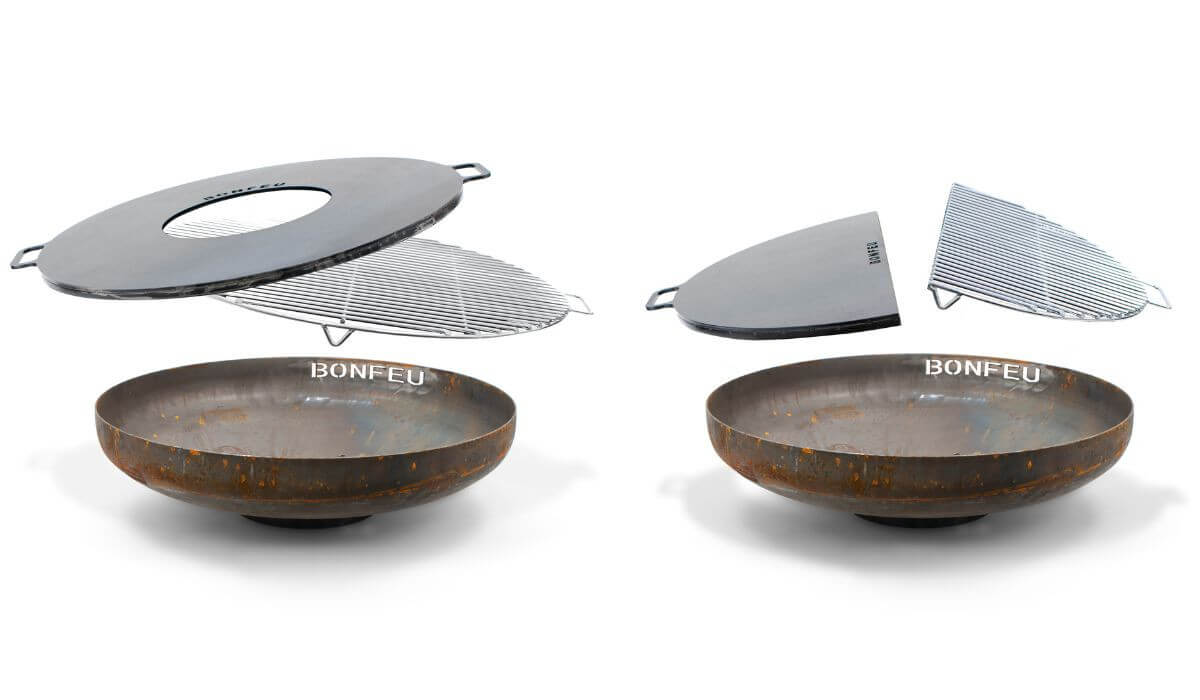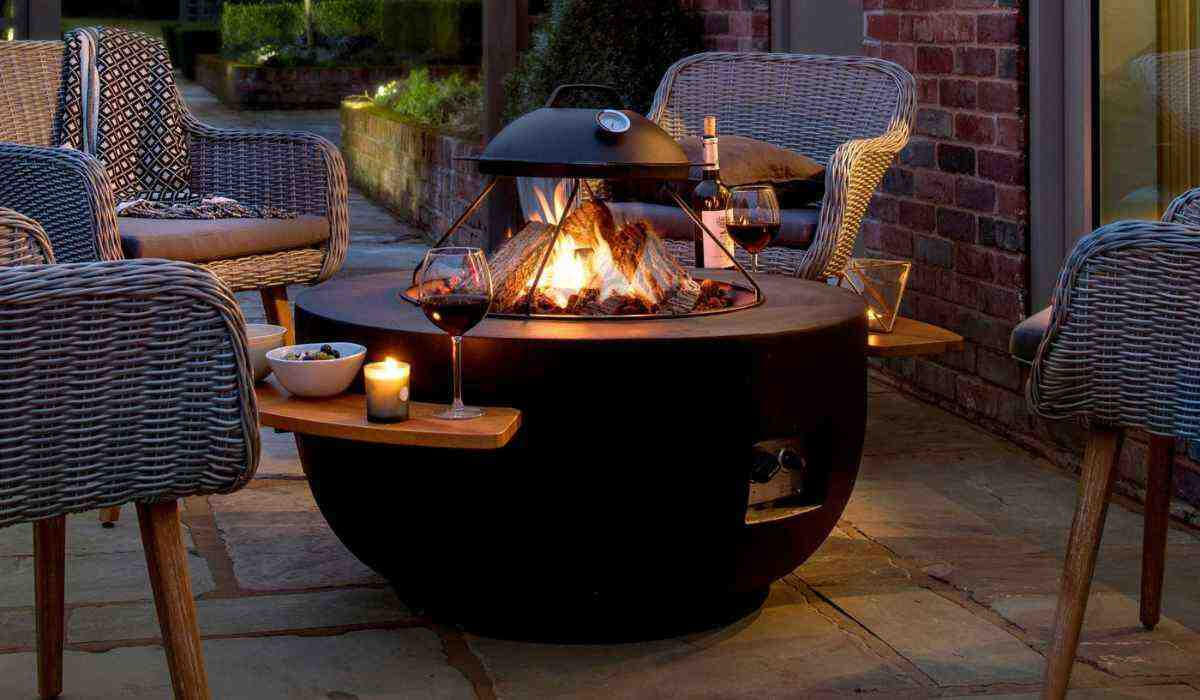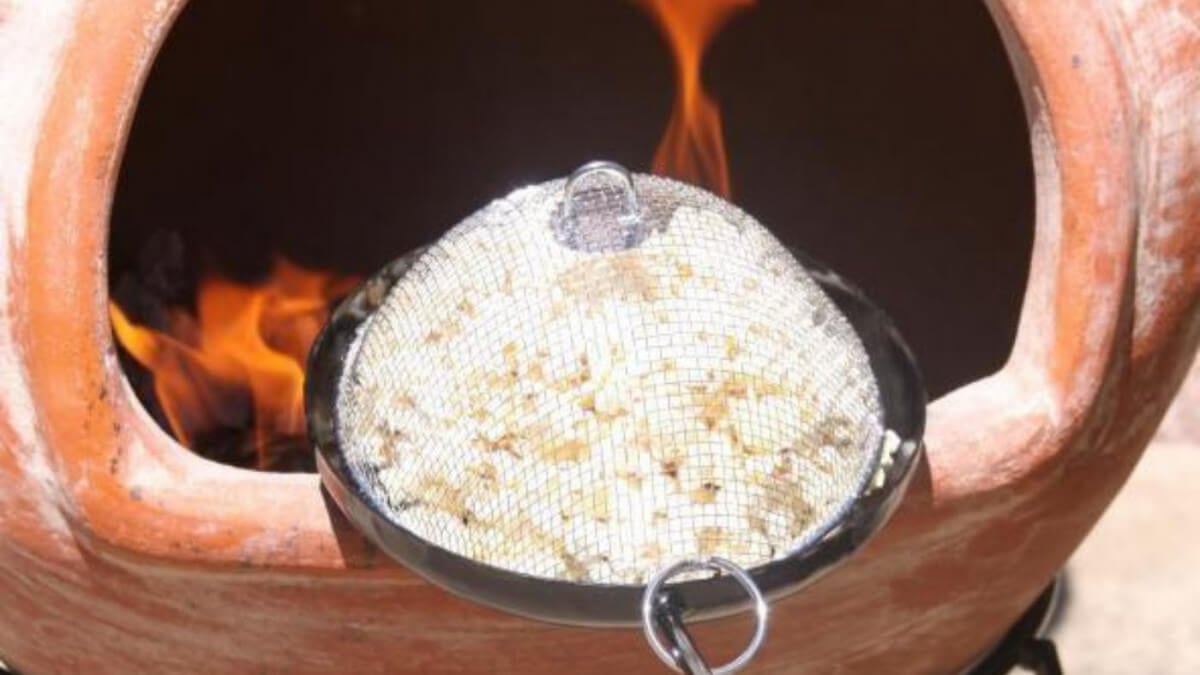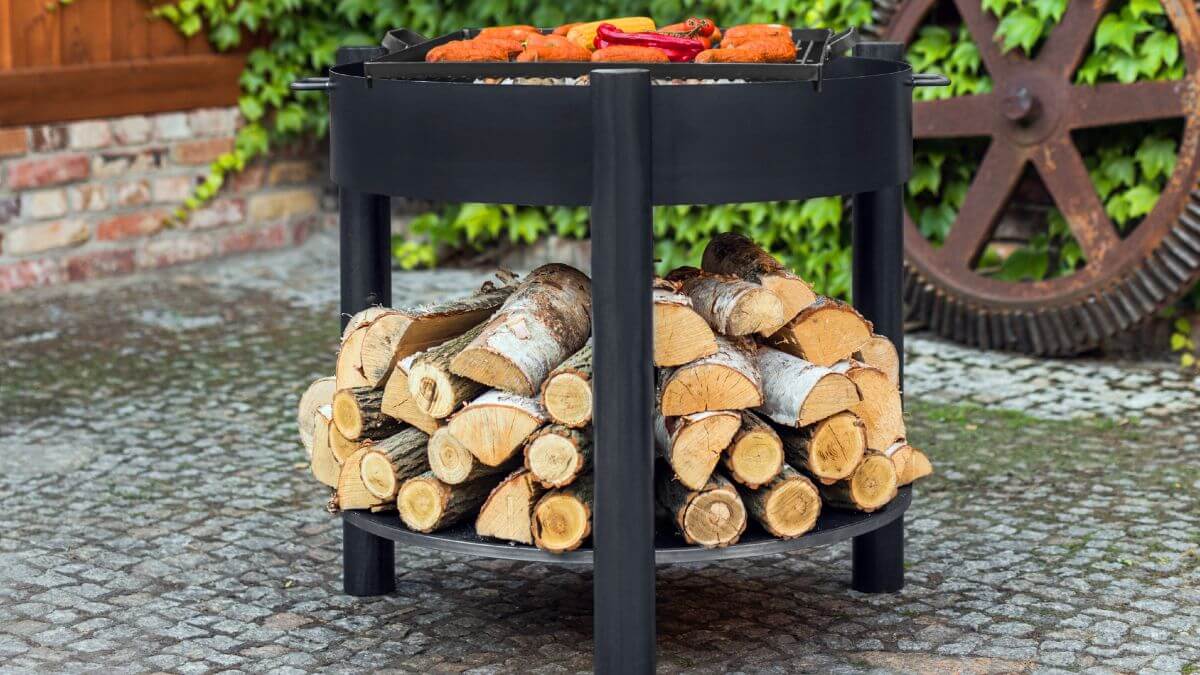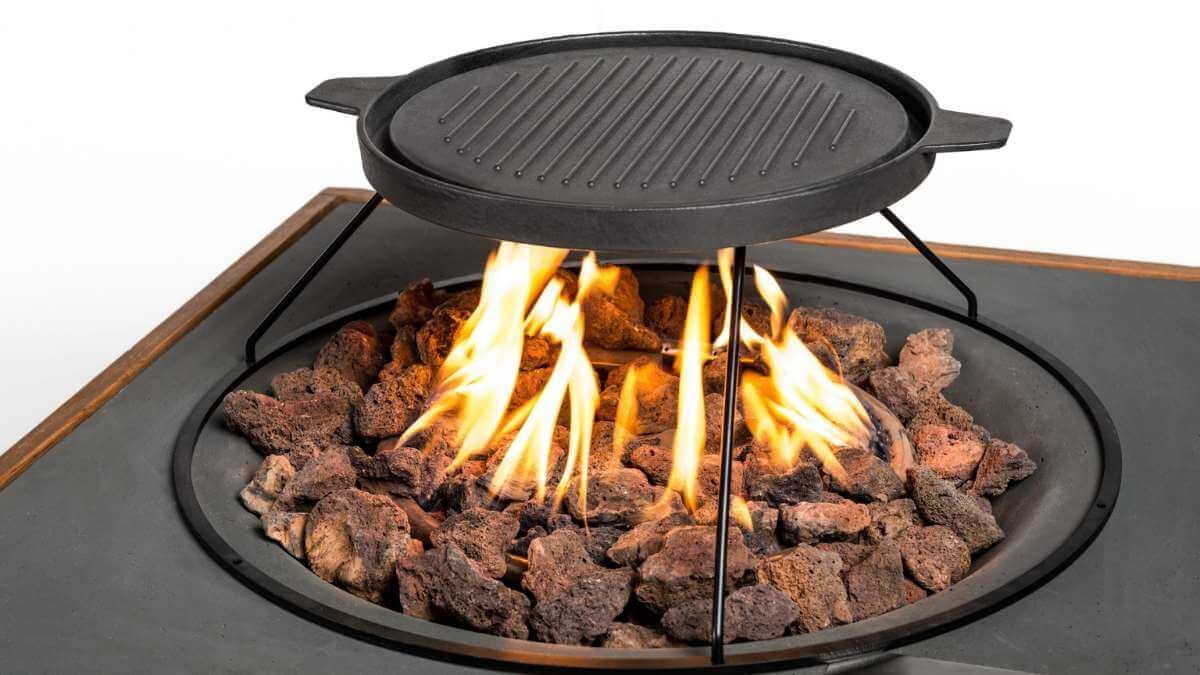Imagine the whispers of the wilderness, the allure of nature, the starlit sky, the camaraderie of your companions, and the warmth of a golden fire from your camping fire pit.
This guide is your compass to finding the perfect portable camping fire pit, designed to ensure an enjoyable and truly unforgettable journey.
The world of camping fire pits is as vast and diverse as the great outdoors, presenting an array of shapes, sizes, and styles, each accompanied by its unique blend of features.
This guide will serve as your trusty map, helping you explore the various types of fire pits and the fuel options available.
Here you'll learn to make a well-informed decision, leading you to a camping fire pit that perfectly complements your outdoor escapades.
Important Considerations
-
A suitable fire pit improves your camping experience by offering a warm and secure campfire area.
-
Features like portability, functionality, and safety should guide your decision-making process.
-
A thorough analysis of available options will help you find a product that meets your needs and budget.
Types of Camping Fire Pits
When choosing a camping fire pit, it's essential to consider the fuel type, size, and portability based on your specific needs.
There are three primary fuel types for camping fire pits: wood, propane, and bioethanol. Each type has its unique benefits and drawbacks.
-
Wood-burning fire pits are the most traditional and widely used. They create a natural, cosy atmosphere with the aroma of burning wood. However, wood fire pits require a constant supply of firewood, and they produce more smoke and ash. Remember not to use the wood you find. This will be green and create a huge amount of unpleasant black smoke.
-
Propane fire pits provide a cleaner burn with practically no smoke or ash. These fire pits are convenient as they’re easy to light up and maintain. Bear in mind that you'll need to carry propane tanks with you while camping.
-
Bioethanol fire pits offer an excellent heat source, clean burning and eco-friendly. You'll need to transport the bioethanol with you.
While considering the fuel type, you should also consider the fire pit's size, weight and portability. Smaller, lightweight portable fire pits are easy to transport and set up. On the other hand, larger fire pits can accommodate more wood and provide greater heat output but may be less portable due to their weight.
Finally, some fire pits have useful accessories like mesh screens to help contain the fire or enhance safety.
By considering fuel type, size, portability, and additional features, you'll be able to find the perfect camping fire pit for your outdoor adventures.
Camping Fire Pit Features to Consider
When choosing the right camping fire pit for your outdoor adventures, there are several features you should consider to ensure you're making the best decision.
Size
The size of your fire pit plays a crucial role in its usability and versatility. A large fire pit can accommodate more people and provide a greater heat output, making it suitable for group camping trips or large gatherings. On the other hand, a smaller fire pit is easier to manage, takes up less space, and is better suited to smaller groups or solo backpacking trips.
Weight and Portability
A lightweight and portable fire pit is easier to transport, set up, and store away as you travel from one camping spot to another. Remember, the lighter and more portable your fire pit, the easier to bring it along on your adventures.
Style and Design
Fire pits come in various styles and designs, from traditional, rustic models to more contemporary, sleek ones. Some even resemble large lanterns or blend into the design of your outdoor furniture. Choose a style that fits your taste and complements the overall vibe of your camping set-up.
By keeping these features in mind, you'll be sure to find a model that suits your needs and enhances your camping experience.
Camping Fire Pit Safety Precautions
When choosing the right camping fire pit, it's important to take safety precautions to ensure a pleasant and hazard-free experience.
Firstly, be aware of your surroundings. Ensure the fire pit is located safely from tents, trees, and flammable materials. Ideally, it should be at least 10 feet away from structures, with 20 feet even better. Check for low-hanging branches or nearby shrubs that may pose a risk.
Ensure you select a location with proper ventilation and choose a fuel source that produces less smoke, such as dry and seasoned firewood. Wet or green wood creates more smoke, irritating you and your fellow campers.
In terms of fire safety, never leave the campfire unattended. Even a small breeze can cause the fire to flare up and spread. It is essential to have a bucket of water or sand nearby to extinguish the fire if necessary. When putting out the fire, douse it with water or sand until the embers are completely cool.
Remember to wear tight clothing or avoid loose, flowy garments while tending to the firepit, as they can easily catch fire if blown towards the flames. Be mindful of the heat produced by the fire pit, and avoid touching its outer surface, as it can become extremely hot.
Lastly, follow local regulations and guidelines concerning open fires in your camping area. Some locations may have specific rules to protect the environment and maintain safety. Adhering to these regulations will help ensure a safer camping experience for everyone.
By taking these safety precautions into account, you'll be able to enjoy a cosy campfire while minimising any potential hazards in your camping environment.
Camping Fire Pit BBQ
Cooking over a campfire can be a fun and rewarding experience during your camping trips.
To begin, find a suitable spot for your campfire. Make sure the ground is flat, on bare earth (not grass), and clear of debris. Your campfire should be three metres (10 feet) away from tents, bushes, and other flammable materials.
Once your fire is lit and established, it's time to prepare for cooking. A grill grate is ideal for placing over the fire. Place your pots, pans, or food items directly on the grate for optimal heat transfer and even cooking.
When cooking over a campfire, remember that it may take longer than cooking in your kitchen. You'll need to turn your food occasionally for even cooking and consider using a thermometer to ensure everything is cooked safely.
To enhance your campfire cooking experience, consider bringing some essential items such as:
-
Tongs or a spatula for turning food
-
A pot or pan with a lid for simmering meals
-
A cast-iron skillet or Dutch oven for even heat distribution
-
Cooking utensils such as wooden spoons or spatulas
-
A food thermometer to check the temperature of your cooked items
Remember, cooking over a camp fire is about the food and enjoyment of outdoor adventures.
Be patient, have fun, and enjoy the ambience of your wood-burning fire pit as you whip up tasty meals.
Mastering the Art of Campfire Cooking: Essential Tips for Safe and Efficient Use of Your Camping Fire Pit"
Cooking over a campfire has an enduring charm. The sizzling sounds, the smoke-infused flavours, and the sheer joy of being one with nature add a dash of adventure to your outdoor escapades.
However, achieving culinary success while ensuring safety calls for some know-how. Here are some tips to help you get the most out of your camping fire pit.
Choose the Right Cooking Equipment
A grill grate is a must-have for campfire cooking. Positioned over the fire, it provides an excellent platform for your pots, pans, or food items, facilitating even heat distribution.
Besides, consider bringing cast-iron cookware, such as a skillet or Dutch oven, for its superb heat retention abilities.
Understand the Heat Zones
A fire pit isn't uniformly hot. Learn to manage and utilize the different heat zones – searing hot, medium hot, and warm – for versatile cooking.
For instance, the outer edges are perfect for slow-cooking or keeping your food warm, while the centre is ideal for grilling.
Practice Safe Cooking Methods
Your safety is paramount. Avoid loose, flowy clothing while tending the fire, as it can accidentally catch flame.
Always have a bucket of water or sand nearby to put out any sudden flare-ups. Use long tongs and spatulas to maintain a safe distance from the heat and flames.
Be Patient and Organized
Patience is the secret ingredient of campfire cooking.
It could take longer than usual, so sit back, relax, and let the fire do its magic.
Additionally, organize your cooking space for efficiency. Having all your tools and ingredients handy saves time and reduces the risk of accidents.
Ensure Proper Food Handling and Hygiene
Bring along a food thermometer to ensure your meals are cooked to safe levels.
Store your food properly to prevent spoilage. Keep your hands and cooking utensils clean to avoid foodborne illnesses.
Extinguish Your Fire Properly
When the culinary session concludes, putting out the fire properly is crucial.
Douse it with water or sand until the embers are completely cool. Always abide by the leave-no-trace principles – clean up your cooking area and dispose of waste responsibly.
While campfire cooking might seem intimidating, the results can be incredibly rewarding.
With a little practice and these tips in mind, you'll soon be whipping up meals that give any home-cooked feast a run for its money while safely enjoying the warm glow of your camping fire pit.
Bon Appétit!
Fuel Options and Efficiency
When choosing a camping fire pit, it's essential to consider the various fuel options and their efficiency. Understanding the advantages and disadvantages of each can help you make an informed decision for your outdoor adventures.
Wood-burning fire pits
These traditional fire pits utilise wood as their fuel source, creating a classic camping experience. They do, however, generate ash, which can affect the cleanliness of your camping area. Using dry, well-seasoned firewood will massively help improve the overall efficiency of your fire pit.
Propane fire pits
A popular choice for campers, propane-powered fire pits offer a clean and efficient alternative to wood-burning options. Propane burns cleanly, creating minimal smoke and eliminating ash residue.
Smokeless fire pits
Consider taking a small bioethanol fire pit, a clean-burning and eco-friendly option.
Weigh the pros and cons of each fuel option when selecting the right camping fire pit. Consider factors such as cleanliness, convenience, and efficiency when choosing. Happy camping!
Portable Fire Pit Maintenance and Cleaning
A well-maintained fire pit ensures a safe and enjoyable experience during your camping trips. Here are some tips for maintaining and cleaning your fire pit.
Here are some tips on firepit cleaning and maintenance.
Remember that regular upkeep and cleaning not only prolong the lifespan of your camping fire pit but also keep your outdoor adventures safe and enjoyable.
Choosing the Right Fire Pit for Your Needs
When selecting the perfect fire pit for your camping adventures, it's essential to consider the type of site, campground, and outdoor space you'll be using.
You must also consider transport and the space needed.
Safety is key when it comes to fire pits. Be sure to choose a fire pit with added features such as a protective screen, secure base, and sturdy construction.
Another aspect to consider is the campground or outdoor space rules. Some campgrounds strictly prohibit wood-burning fire pits, while others may have specific guidelines regarding the type and size of fire pits allowed. It's important to remember these rules when selecting your fire pit to ensure a hassle-free camping experience.
Affordability and Versatility
When looking for the perfect camping fire pit, you'll want to consider both affordability and versatility.
Versatility should significantly influence selecting an ideal fire pit for your camping trips.
Consider looking for portable fire pits that can double as a BBQ grill. This dual-purpose feature allows you to save space and adds convenience when you're on the go.
The convenience of a portable fire pit is an essential aspect to consider. You'll want a fire pit that's easy to transport set up, and pack away.
Let's Not Forget The Fireplace Bell Tent
Venturing beyond traditional camping fire pits, an outdoor fireplace is an excellent addition to your bell tent, given the right flue and related accessories for a safe fire.
Take the Bushmaster Camping Stove, for instance. This compact yet powerful stove is ideal for maintaining a more uniform temperature within the limited space of a tent. Its clever design features ensure you stay warm without compromising on space. Moreover, the effective flue system, aligned seamlessly with the Bell Tent Fitting Kit, safely directs smoke away, ensuring a safe and comfortable environment.
But the Bushmaster isn't just about warmth. It's also your outdoor culinary partner. Whether you're grilling your favourite meal or boiling a kettle for a fresh brew, this stove offers a multifunctional solution, further enhancing your camping experience. With its balance of warmth, comfort, safety, and practicality, the Bushmaster stove is an indispensable asset for any camping enthusiast seeking to enrich their stay in a canvas bell tent.
Frequently Asked Questions
What Features Should I Consider When Choosing Portable Fire Pits?
When choosing a camping fire pit, consider fuel type, size, weight, and portability. Fire pits can use wood, propane, or bioethanol as fuel, each with pros and cons. The size should match your camping group's size and the heat output needed. Consider a lightweight, portable fire pit for easy transport and setup. Also, look for additional features like mesh screens for enhanced safety.
What Rules Should I Consider Regarding Fire Pits at Campgrounds?
Rules for campground fire pits vary, so check local regulations before setting up. Some campgrounds prohibit wood-burning fire pits, while others may specify the type and size of fire pits allowed. Ensuring your fire pit adheres to these guidelines will provide a hassle-free camping experience.
What Are the Different Types of Camping Fire Pits Available?
The main types of camping fire pits are based on their fuel source: wood, propane, and bioethanol. Wood-burning fire pits offer a traditional, cosy atmosphere but require a constant wood supply. Propane fire pits provide a clean burn with less smoke but require propane tanks. Bioethanol fire pits provide a clean, eco-friendly heat source, but you'll need to transport bioethanol for fuel.
How Can I Safely Create a Roaring Fire During My Next Camping Trip
To safely create a roaring fire on your next camping trip, select a flat, isolated spot away from flammable materials. Use dry, seasoned wood and arrange it for proper airflow.
Subscribe to our email
Enter your email address below for a monthly email with links to all the latest blog posts. Simple unsubscribe at any time.

